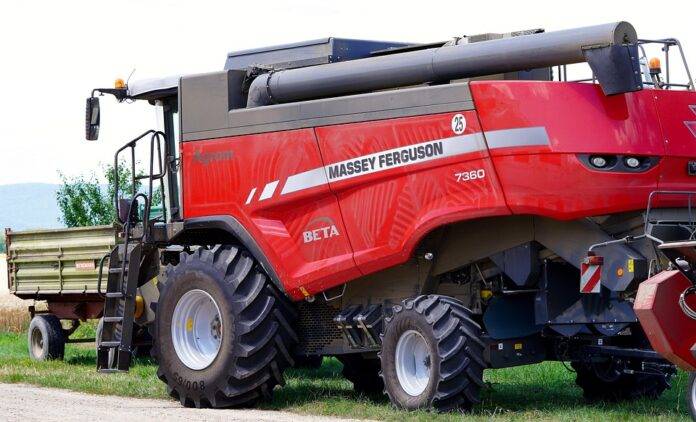Introduction
Combine harvesters are essential agricultural machines used to harvest crops such as wheat, corn, and soybeans. One of the key decisions farmers face when choosing a combine harvester is whether to opt for a self-propelled or a tractor-pulled model. In this report, we will explore the differences between self-propelled and tractor-pulled combine harvesters, including their advantages, disadvantages, financial implications, and industry insights.
Self-Propelled Combine Harvesters
Overview
Self-propelled combine harvesters are standalone machines equipped with their own engines, wheels, and harvesting mechanisms. They are designed to operate independently in the field without the need for a tractor to pull them. Self-propelled combine harvesters are known for their efficiency, speed, and maneuverability, making them popular among large-scale farmers and agricultural contractors.
Advantages
One of the main advantages of self-propelled combine harvesters is their ability to work autonomously, allowing farmers to cover more ground in less time. They are also equipped with advanced technology such as GPS systems, yield monitors, and automated controls, which help optimize harvest operations and improve overall efficiency. Additionally, self-propelled combine harvesters offer better visibility for the operator, leading to improved safety and precision during harvesting.
Disadvantages
Despite their numerous advantages, self-propelled combine harvesters tend to be more expensive than their tractor-pulled counterparts. The initial investment cost can be a significant barrier for smaller farmers or those with limited budgets. Maintenance and repair costs for self-propelled combine harvesters can also be higher due to their complex machinery and advanced technology. Furthermore, the specialized skills required to operate and maintain self-propelled combine harvesters may pose a challenge for some farmers.
Tractor-Pulled Combine Harvesters
Overview
Tractor-pulled combine harvesters, as the name suggests, are pulled by a tractor to move through the fields and harvest crops. They are typically less expensive than self-propelled combine harvesters and are a popular choice among small to medium-sized farmers. Tractor-pulled combine harvesters are versatile and can be used with different tractors, making them a flexible option for farmers with varying equipment needs.
Advantages
One of the main advantages of tractor-pulled combine harvesters is their lower initial cost compared to self-propelled models. This makes them more accessible to small farmers or those with limited capital. Tractor-pulled combine harvesters are also easier to operate and maintain, as they rely on the tractor’s engine and controls. Additionally, the compatibility of tractor-pulled combine harvesters with different tractors provides farmers with more options and flexibility in their equipment choices.
Disadvantages
While tractor-pulled combine harvesters offer cost advantages, they may not be as efficient or productive as self-propelled models. The reliance on a tractor to pull the harvester can limit the speed and maneuverability of the machine, potentially slowing down harvest operations. Tractor-pulled combine harvesters may also lack some of the advanced features and technology found in self-propelled models, which could impact overall performance and efficiency.
Financial Implications
Cost Comparison
When comparing the financial implications of self-propelled and tractor-pulled combine harvesters, it is important to consider not only the initial purchase price but also the long-term operating costs. Self-propelled combine harvesters generally have higher upfront costs due to their advanced technology and autonomous capabilities. However, they may offer better efficiency and productivity, leading to potential cost savings in the long run. Tractor-pulled combine harvesters are more affordable initially but may incur higher operating costs over time, especially in terms of fuel consumption and maintenance.
Industry Insights
In the agricultural machinery industry, self-propelled combine harvesters have been gaining popularity due to their advanced features and improved efficiency. Manufacturers such as John Deere, Case IH, and Claas are investing heavily in research and development to enhance the capabilities of self-propelled combine harvesters. On the other hand, tractor-pulled combine harvesters remain a staple for many small and medium-sized farms, particularly in regions where labor costs are lower and fields are smaller.
Conclusion
In conclusion, the choice between a self-propelled and tractor-pulled combine harvester ultimately depends on the specific needs and resources of the farmer. While self-propelled models offer advanced technology and efficiency, they come with a higher price tag and maintenance costs. Tractor-pulled combine harvesters, on the other hand, provide a more affordable option for farmers with smaller operations. By carefully weighing the advantages and disadvantages of each type of harvester, farmers can make an informed decision that best suits their individual circumstances.




